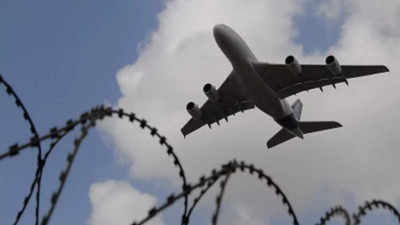KABUL (Khaama Press): Travel times between the East, notably India, and the West will be drastically shortened in the coming weeks, particularly after important aviation regulators let commercial planes start flying over Afghanistan, according to an Indian media outlet on Friday.
After the Taliban regained control of the country in August 2021, overflights were suspended.
According to the Economic Times, American Airlines have been permitted by the US Federal Aviation Administration (FAA) to fly over the Kabul Flight Information Region (FIR) at altitudes greater than 32,000 feet.
This decision comes as the FAA assesses reduced risks to US civil aviation operations at higher altitudes in the region. The move aligns with the European Union Aviation Safety Agency’s (EASA) directive to its member state airlines, urging them not to fly below 32,000 feet due to ongoing potential threats to civil aviation and high operational risks at lower altitudes, the report said.
Flights between the western and eastern regions, including northern India, have taken longer detours over Afghanistan’s airspace since August 2021. These detours increased the flight time by about 30 minutes. Last summer, when Russia attacked Ukraine, more airspace restrictions were implemented, which caused Western airlines to avoid Russian airspace altogether. This caused the situation to worsen. According to the report, a portion of the congested aviation route is finally freed with the recent restoration of Afghanistan’s airspace for overflights.
Following the Taliban takeover of Afghanistan, the International Civil Aviation Organization Asia-Pacific office established a Contingency Coordination Team (CCT) consisting of Afghanistan and neighbouring air navigation service providers.
However, representatives of Indian airlines claim that it would take some time before overflying Afghanistan can resume. They draw attention to the necessity of thorough risk assessments and the creation of emergency landing protocols at Afghanistan’s airports.
Additionally, as aircraft would need to reach Afghanistan from these routes at specific heights, collaboration and participation from nearby countries such as Turkmenistan and Pakistan are essential. Airlines are cautious as they wait for more information and clearances, even though the FAA permission represents a significant advancement and may encourage other aviation agencies to follow suit. Major US carriers are represented by the Association for America Airlines, which is now reviewing the revised standards.







